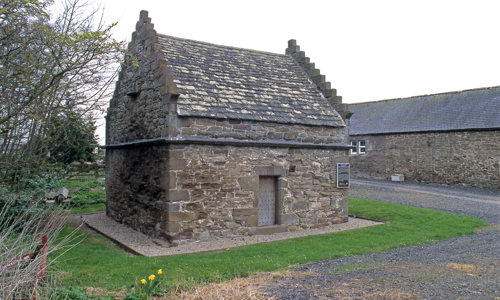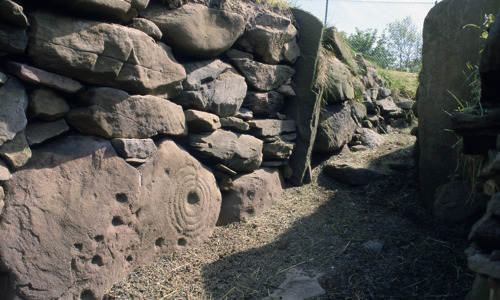History
St Orland’s Stone is a Pictish cross-slab dating to the AD 700s or early 800s. It’s sometimes referred to as Cossans, but has been known as St Orland’s since at least 1792. We don’t know who St Orland was, or his relationship to the stone.
Unique carvings
On St Orland’s we find the only representation of a boat from this era in Scotland. Apart from log-boats, no remains of a Pictish boat have ever been recovered, so this is an important source of evidence for what Pictish boats looked like.
Aside from the boat, carvings on the stone include:
- a prominent cross dominating one face
- Pictish symbols including a crescent, Z-rod, double disc and V-rod
- men and fabulous beasts
The cross stands on a low ridge overlooking land that was once wet, which may have a bearing on the boat imagery on the back of the stone.
Reminders of the Picts
We don’t know a lot about the Picts, the descendants of Iron-Age tribes who occupied the area north of the Forth and Clyde estuaries in the first millennium AD. They left about 300 carved stones scattered across the country. The earliest of these stones, such as the Brandsbutt Stone, date to about AD 600 and display a variety of enigmatic symbols.
St Orland’s Stone, probably erected in the AD 700s or 800s, belongs to the later group of Pictish stones, which were more overtly Christian. It’s one of a handful of free-standing cross slabs erected by the Picts, most of which only survive as fragments.














